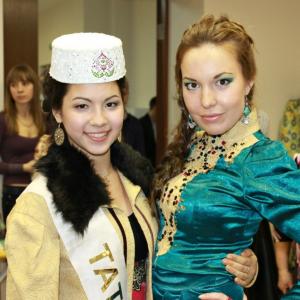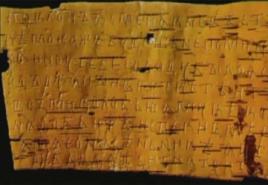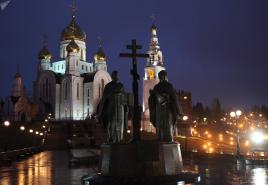"A.S. Pushkin" Tale of Belkin ". Theme and ideological meaning of one of them
Evgenia Safonova,
Peter-Dubravian school,
Samara Region
Written in Nizhny Novgorod Earth
On the sense of the story of Pushkin "Ummaker"
Pushkin prose is presented in modern programs in school wide. Along with the textbook "Captain's daughter", "Dubrovsky", the "peak lady" included in the study and "Tale of Belkin". It is not possible to dwell on the history of their reader and critical perception, but nevertheless it is impossible not to note a very characteristic moment. Even with a quick look, a very peculiar temporal sequence of incorporating Pushkin Agens will be turned on in a circle of readership perception. The most actively studied and studied at school most often three, and still autonomously taken: "Stationander", "Shot" and "Misel". At the lesson, limited to a conversation about the individual works, voluntarly or unwittingly, the teacher and the whole cycle reduced their content and meaning, sometimes only mentioning the rest. Sometimes "shot" was replaced by another tale of the cycle - the "young lady-peasant." As for the "Undeller", he turned out to be the most closed for school study by the work and as a result much less "read." The serious objective reason for the "rejection" of the fifth tale from studying at the school of the whole cycle is the difficulty of its perception. More L.N. Tolstoy extremely accurately noticed, engaged in Yasnoyland students who are striking and difficult for the direct perception of the features read by them "Urbanger": "The author's non-serious attitude to persons"; "Comic characteristics"; "Injustfulness".
What to do? Is it possible to talk about the conceptual study of the "History of Belkin", ignoring the story "The Ummaker"? Creating five extremely not similar (on topics, according to style) of the lead, Pushkin combined them into the cycle, thereby finding their integrity, proximity in spirit.
The "Coffin" was written first (September 9, 1830), thereby specifying the direction of the entire cycle. As a result, he took a middle place in the cycle, becoming between the "blizzard" and the "stationary caretaker". Thus, the question arises about the creative logic of the movement of the author's thought, which is impossible to comprehend without inclusion in the school study of the story "The Ummaker".
When reading the work, certain images, especially when reading with interruptions, usually cause certain thoughts from the reader - such thoughts are natural and do not kill the emotionality of perception. We ask students to fix questions arising in the course of an independent acquaintance with the text in the left column of notebook. And right to record your answers, if any appeared with further reading. Difficult to perceive artistic text simply needs such work. The system of homework should be built so that the main unit will be preparing for a lesson, and not after the lesson, so that students learn to ask questions themselves and search for answers in the text so that the teacher analyzes the written work in advance and based on their work on the analysis of the artwork at the lesson. . The empathment is deepened when the students became interested on their own, it receives further development in the lesson. Then the knowledge becomes necessary for students themselves and give birth to new questions.
One student without special training will begin a conversation about the main hero. It is not scary if at the same time reasoning about the character will be as a real person with whom he just met. When identifying the initial perception, a naive-realistic approach is quite substantiated.
Imagine the literary hero as your friend, you introduced a writer with him, showing it in different circumstances and from different sides. Let's now speak out about it: how do you imagine it? What is unusual or, on the contrary, is common? Why did Pushkin decided to offer readers the image of the arter of Adrya Prokhorov? What is the secret of this character?
For what purpose, in your opinion, is a Pushkin Hero-Underman? Whether to explore the representative of this profession, or in order to have fun, whether in general to capture his own unexpected author's well-being at the time of writing. What is the mood story? What makes a gloom note at the beginning of the narration?
The leading motive of the narration is the indication of the grim character of Adrian Prokhorov, his disgust. The gloom note is made and the craft of the character. She is configured and the epigraph to the story. Pushkin, epigraphs always have a special intelligent role organizing . "Do not see every day of the coffins, the settlement of the drains universe" - Words from the Derzhavinsky "Waterfall".
Do you relate, in your opinion, the style of the epigraph with the common story of the story? High, solemn sound of rows made from Derzhavin, their cosmic philosophy, on the one hand, and insignificant farce from the life of the Moscow arterier - on the other. Contrast or combination?
The contrast seems to be a high style of the epigraph on the background of the initial, deliberately reduced phrase about the fission of the coffin, shown on funeral drows. It is clear that death for a long time does not cause a hero of special feelings. Irony sounds in the description of the signboard, "Pictures of Dorodny (!) Amur (!) ... with the signature:" Coffins are sold and hung up here and sacrifices are also surrendered for hire (!) And the old (!) "Is repaired."Is all this explicit inconsistency of the epigraph? Maybe the author deliberately puts his "low" hero to face to face with eternal issues of being? After all, they are not worth the elected, but before any mortal. How does a person understand his appointment in life? Does his meaning interest?
Pushkin's humanism reveals that anyone in the world is part of the universality and truth of the universe. The author of the story "The Coffin" offers in an ordinary person to see something more, significant (while not doing the hero better, without embelling the character). Connecting an universal scale of death in the epigraph and household, comic history with the "Deadians" in the story itself, Pushkin establishes the system of relations: life-death, being-life. Pushkin again puts questions about readers. What is the meaning of life? How to achieve happiness, what is it? Is it possible to call the hero "ordinary" man? What dreams of a "simple" person? Thus, the writer, opening the readers of the Belkinsky world, as if unpacing the doors, but not in the shop of funeral affairs masters, but in Russian life, in the circle of "eternal" questions and problems.
To understand the character of the hero and his role in the ideological orientation of the story, choose the starting, clearly designated in the text of the character's character character and try to develop it. Prokhorov's "gloomy" is the artistic part, without which it is impossible to understand the story.
Causes of this gloomy? How does she manifest in the narration? What is the basis of the character of the hero: Trugachey Barysh (someone else's death as a means of profit), cynical attitude towards peace and people (calmly drinks tea on coffins placed in the room) or something else?
What could be a joyful event for this person? Moving to a new place long-awaited, but neither shadow of joy in the sensations of the hero: "Approaching the yellow house, so long ago he had seduced his imagination and finally bought by him for a decent amount, the old urbeller felt in surprise that his heart was not happy."
It was said as passing. But in essence, we are the key to the inner world of the hero. The manuscript was the originally "pink house". What associations arise in connection with this color? What did you want to say the author's replacement author? Yellow in the spectrum of Russian culture, as it is believed to the expression of negative-negative values. Elegy memories of the "Old Towel" also signal; It is no accidentally even more difficult to explain the further reaction of Adryan: "Feltfrom Amazingthis is His indifference. "The lack of joy is a serious symptom of the inner state of a person. But the "surprise" of this circumstance is the beginning of the reaction that could entail a number of serious changes in relation to life. Is it always the stability of life is the key to satisfaction and success? What kind of synonym can be chosen here by the word "stability"? The immobility, the immutability of life is a kind of non-existence erected into the absolute. "The gloomy" of the undertaker is not just an attribute of the profession. Next to the "gloomy" in the text there is a "thoughtfulness": the hero "Ugryum and thoughtful", "as usual ... immersed in sad reflections." There is a definite chain of transitions: gloomy–sullen–frowning–pensive.
What is the reason for the idea of \u200b\u200bthe hero? What is unhappy in life?
Compare Adryan Prokhorov with other characters a story. "Merry" Schulz - Antipode "Gloomy" Adriah. Why do we take keywords in quotes? How should I understand them in the context of the work?
In the "gloomy" of Prokhorov, dissatisfaction with life, growing, as we will see,  protest. The following opposition is created: "Merry's glooming" as "thoughtless-heartless in relation to life." As for the outside, the fun smiling Schulz sits behind the samovar at Prokhorov on the background of the coffins leaning towards the walls and calmly drinks tea.
protest. The following opposition is created: "Merry's glooming" as "thoughtless-heartless in relation to life." As for the outside, the fun smiling Schulz sits behind the samovar at Prokhorov on the background of the coffins leaning towards the walls and calmly drinks tea.
There is one more time-based character in the story, the function of which, at the initial perception, is unclear to students. This is Budechnik - Chukhonets Jurko. Together with Prokhorov and Schulz, he forms a kind of semantic "triangle". Is he opposed to the chief hero or, on the contrary, correlated with him? Great events are happening around, there is a life of a first-hearth holiday, and Jurko holds days at its booth. Moscow historical events pass by. This off of the events of historical, from the life of the city is the same immutability, because nothing can change his life: he is always next to his booth as Adrian near the coffins.
But how are heroes different? Pushkin has no characters duplicating each other. Heroes, as we said, form a "triangle", that is, they are all comparable and opposed at the same time. Once again, we will pay attention to the fact that Adriain, in contrast to Jurko, which everything suits in life, intuitively feels the absurdity of hopelessness, insaneness, inferiority of its existence. Therefore, he is gloomy and thoughtful. He has the need to see the prospect of life, its dynamics, which should destroy the immutability of being, that is, to designate the meaning and significance of further existence. In this case, the invitation to itself on the housewarming of the dead is the "Bunk" Prokhorov. "What is my craft is not more honest?" - "... Is the urbeller brother executioner? .." What are you talking about? On the dignity of human existence, no less.
The story of what is happening that replaces the image of what is happening in a dream. But replaces how? Unnoticed. What is the meaning of the imperceptibility of such a transition? Why is it necessary to the author to read the first time this work to the end, could not distinguish with a dream?
The earliest "epigraph" to the Boldin creations of 1830 was the poem of the "demons". Maybe we will find the key to the answer to the given question?
Is there a poem situation on the verge of reality and ghost? ("What is there in the field?" - "Who knows them? Single Ile Wolf?"; The houses are buried, // the witch of marry give?) We are not just a concrete image of a blizzard, a description of the events - we have an image of the inner world of a person, where it may be that in real life it is impossible.
What is the role of fantastic in the poem about demons and in a story about the phenomenon of the dead? The incomprehensible, unknown in Pushkin belongs not to the world external, but the world of "internal person" and is another key to understanding the nature of the character image. This fiction is not fiction as such, but the reception of the image of the inner essence, psychology, the character of the hero. What is the source of the alleged joy in the dream of Adryan? Adriain is waiting for a "joyful event" - the death of a profitable client, the checkpieces of Truchina. But, exercising in a dream, the desire does not bring him joy, but becomes just a household detail, everyday troubles. So, the benefits and burn are not determining the components in the life of the hero. It should be paid to another detail, which also puts doubt on the compassion as the main feature of the character. Without forgetting your own benefit, Adriain, however, does not pay like other merchant merchants at the Triuhina, as a raven, who revealed the dead body. The fact that for merchants the joy is equally, for Prokhorov, rather the usual troubles of the masters of the master.
What is the meeting with the dead men? What feelings are the hero? What is the meaning of a conversation with a skeleton? What is the awakening? On the one hand, the hope and ghostly joy from a profitable order disappears. But for replacing them suddenly comes ... New joy. What is she? Ghost or real? This is a splash of joy at the light of the sun life.
The "gloomy" hero at the beginning of the story becomes "delighted" at the end. And this is the speaker. "Oh, whether! - said the delired arter ... well, if so, let's rather tea yes, call daughters. " The failed funeral does not cause any annoyance or irritation. As a result - a bright major splash. Thus, there is a refutation of the initial situation, the denying of immobility and hopelessness of existence. It means that the character of a person is not at all comprehension, not a cynical attitude towards peace and people. Hidden dominant story is the sharp need for joy. It carries the designation of the obligation of the Awakening of a person to life, desire to enjoy, be a full-fledged participant of being.
Why is it shown by Pushkin on the history of life of some submissor? Pushkin emphasizes that the desire for the joy of life is inherent in any person that everyone in this world is self-sufficient and worthy of respect. The "small" social status is not at all such in terms of spiritual: and Adriain Prokhorov, and Samson Pushkin from the "stationander", and other heroes of Pushkin declare their right to ordinary well-being and dignity, understood and in direct, more narrow meaning - Feel yourself with a person next to the strong world of this, and in a wider - to be a man in his own eyes.
Change something in the life of the Ultimate from the moment of awakening? Externally, maybe everything will remain as before, but the "internally" hero is already different. The word "thinking" means the work of thought, the search for the meaning of life. "Thinking", the person instinctively "predicts" a different, more interesting side of being. Waking up from the nightmare, he feels this new life, he receives - for the first time in many years - joy from his stay in the world, from communication with other people.
What unites the story "Undeller" with other works of "Belkin" cycle? Ultimately, this is a question concluding the main conceptual idea of \u200b\u200bPushkin - about the place of a person in life, about happiness, honor and dignity.
As mentioned above, the next after the "tutor" was the story "Stationander". Comparison of heroes and question: What is the connection of these two stories? - It can be a homework for the next lesson.
With a variety of topics, the cycle of "ART" is endowed with a single meaning. Already in the first story of the cycle, the Umobrovik - the idea is argued that the life of the smallest man himself, in something even a burdon among the agents-artisans, can be given against the background of space being (epigraph of Derzhavin). The question of the life and death of a person, about the value of life is put in a large-scale and deep and in the "shot", and in the "blizzard" and in the "stingy caretaker" and in the "young peasant".
The 30s of the XIX century became the era of the real heyday of Pushkin prose. The first completed prosaic work of Pushkin was the "Tale of Belkin", in which the writer described the life of representatives of different classes and classes. This cycle had a great influence on the development of Russian literature. We offer to familiarize the analysis of the work according to plan, which will be useful to students of grade 6 when writing essays on this topic and prepare for the lesson on literature.
Brief analysis
Year of writing - 1830 year.
History of creation - The cycle is written in the village of Boldino, along with many other works of Pushkin. They were taken to the pseudonym Ivan Belkin to avoid possible problems with censorship or literary critics.
Composition - All stories are distinguished by the simplicity of the storyline, the lack of unnecessary parts, non-renewability and intrigue plot.
Genre- Tale.
Direction- Romanticism ("Shot"), sentimentalism ("Stationander", "Blizzard", "Baryshnya-peasant"), "The Ultimate" contains elements of the Gothic story.
History of creation
In the fall of 1830, Alexander Sergeevich spent in the village of Boldino, and because of the outbreak of cholera was forced to stay here. Autumn time always inspired the poet, gave a tide of creative forces. According to his confession, he always was always written in the fall in the village.
Three months spent by Pushkin in Boldino were very fruitful: he graduated from the novel "Evgeny Onegin", wrote the poem "Domik in Kolomna", several dramatic scenes, more than 30 poems. In the same period, the Pushkin was written a cycle called "Tale of Belkin", which included five small works: "Shot", "Blizzard", "Stationander", "Coffin", "Baryshnya-peasant woman".
Material for the agent was the memories of the writer, legends, household episodes marked by him from the life of friends and completely unfamiliar people.
Meaning of the name The collection is quite simple - for its first prosaic work Pushkin decided to take a pseudonym, choosing the image of a non-existent landowner Ivan Petrovich Belkin. Thanks to this decision, Alexander Sergeyevich managed to avoid unnecessary trouble with criticism and censorship.
Subject
All five works from the cycle of Pushkin "Tale of Belkin" are dedicated to one topic- the lives of ordinary people, with their large and small problems, hopes and dreams. This life is beautiful in its simplicity and undism, and completely reflects the realities of the world around, infinitely distant from the sublime ideals of romanticism.
In small works, the writer talentedly uncovered problems Provisions in the Society of "Little Man" ("Stationander"), morality and social contradictions ("Shot"), love ("Baryshnya-Peasantkaya", "Misel"), desires and striving of simple artisans ("Coffin").
It is noteworthy that in all works the writer abandoned the separation of heroes on sharply negative and positive characters. Each of them shows from all sides, in all the versatility and ambiguity of characters.
The basic idea The cycle is to show the life of representatives of various layers of Russian society, from Niza himself to the top. Pushkin does not explain the actions of his heroes, providing the right to readers to make their own conclusions. To live on conscience, not to make evil neighbor, rejoice in what you have - what the cycle of Belkina teaches.
Composition
Conducting the analysis of works in the "Handes of Belkin", it should be noted that all of them, despite a variety of topics, have a similar composite structure.
The writer focuses the attention of the reader on key episodes, not tiring secondary plot lines, long retreats and unnecessarily detailed descriptions.
The general characteristic of all the leaders included in the Pushkin cycle should be attributed primarily an element of shortness. Writer everywhere, where only you can, it does not say, providing the reader the opportunity to connect your own fantasy.
There are other similar motives in the construction of the ART. So, they are united by the change of narrator, unexpected turns in the fate of the main characters, the change of attention to one, the current to another hero. Such techniques give the works tension, rapidness, to the end holding intrigue. In this case, the test remains clear and simple in the plot.
main characters
Genre
The cycle is five stakeholders following each other. They are united by internal motifs, and perfectly complement one other.
For each story characteristic of its literary direction. So, the "shot" is romanticism, the "lady-peasant", the "blizzard" and "stationary caretaker" - sentimentalism, and the "Undeller" is a gothic prose.
Test on the work
Rating Analysis
Average rating: 4.5. Total ratings received: 85.
The writing
"Tale of the late Ivan Petrovich Belkin" A. S. Pushkin marked the beginning of the Russian realistic story of the XIX century. Under the general name, five stakes are combined ("Shot", "Blizzard", "Ummaster", "Stationyer", "Lady-Podswash").
In the "Peters of Belkin" Pushkin relies on the tradition of the narrative prose of the end of the 20s of the XIX century.
In the "Shot" and "Misley", romantic situations and collisions are allowed simply and happily, in a real environment, without leaving the place of any mysteries and melodramatic endings that were so popular in the romantic story.
In the "young peasantry" seemed to the romantic hero, which even worn the ring with the image of the skull, turns out to be simple and good small, who are his happiness with a cute, ordinary girl, and the quarrel of their fathers, without breeding anything tragic, ends with a good peace.
In the story "Ummaster" all sorts of wonderful and mysterious situations associated with the afterlime world, inherent in the romantic score of the ladies and the TIP, are reduced to the very prose trade of coffins. The appearance of the ghosts turned out to be only a dream of the adrian submerged arter. Mysterious becomes comic, losing his whole romantic halo.
With his truthfulness, deep penetration into the character of a person, the lack of any melodramaticism the story "Stationander" laid an end to the influence of the sentimentally didactic story about a "little man", the leading began from the "poor Lisa" Karamzin. Idealized images, sentimental plot situations, moraling are replaced by real types and household paintings of invisible, but all well-known corners of Russian reality. Such is the postal station, where the writer finds genuine joys and sore life. The mannered language is inferior to a simple and inefficious, resting on the people's household, the story like the story of the old man - the caretaker about his dun.
The story "Shot" from the first lines surrounds the atmosphere of mysteriousness, "some kind of mystery surrounded his fate," says the story of the story.
Before us is the first in the Russian prose the character of the Napoleonic type. This is a natural, spiritually strong, seeking to the championship, not too paralleling in achieving the goal.
At the same time, this person is alive, contradictory, endowed with bright individuality and social typical, developing throughout the narration.
Hate Silvio - Hate Almost Plebee, actually not even to the count as a person, but to the embodiment of all those who got happiness without effort, who is endowed with the right of birth and loud name and wealth. But after six years after a quarrel, when Silvio utters his confession, it is impossible not to feel that this is a large one person: recall his merciless to yourself, his unwitting admiration for a young opponent.
Silvio's eyes sparkle when he reads a letter - news that an hour has come for a shot. However, the hero took an obvious mental fracture. "I bet you your conscience," says Silvio Count. In fact, he won a spiritual victory over himself, he betrayed himself with his own conscience - because he refused the "right" to murder.
Other writings on this work
Tale of Belkin "Tale of Belkin" A. S. Pushkin as a single work Idean-artistic peculiarity of the "Agenda of Belkin" Blizzard in the story of A.S. Pushkin (writing-meditation) Tale A. S. Pushkin "Baryshnya-peasant woman" Romanticism and irony in the "Peters of Belkin" A. S. Pushkin Silvio - the protagonist of A. S. Pushkin "Shot" Silvio - a romantic hero (according to the story A. S. Pushkin "Shot") Holistic analysis of the story of A. S. Pushkin "Baryshnya-peasant woman" What brought a blizzard Heroes of the story A.S. Pushkin "Blizzard"\u003e Works on the work of the arter
the main idea
A. S. Pushkin was written by A. S. Pushkin in 1830 in the village of Big Boldino and entered the cycle of the "Agenda of the late Ivan Petrovich Belkin". This is one of the most peculiar stories on the plot and composition. The story of the Ultrasher begins with the description of the main character and its lifefriend. In essence, the Unerman Adrian Prokhorov, is the only character in the work that the author describes.
This is a sullen and gloomy resident of Moscow, which the whole family moved to a new home and is trying to equip his life. The main concern of Adrian is the rapid receipt of the order from the relatives of the dead people, in order to get ahead of competitors. It would seem that there is nothing unusual in his craft. He also, like others earns money, performing its work. However, in the process of developing the plot it becomes clear that for him people are not people, but potential fillers of the coffin. The death of others has become life for him.
Everything clarifies one circumstance. During the feast of a neighbor on the occasion of a silver wedding, all guests' craftsmen offer a drink for their customers. One adriana is not for whom to drink, because his clients have long been dead. Guests of the feast are fooling over this topic, than strongly offend the arter. Returning home drunk and angry, he says to his worker Axier, which intends to call for a housewarming instead of the neighbors of his former customers, that is, the dead. At Axigny's persuasion, the Adrian does not pay attention to.
As a result, he dreams of sleep, in which the deceasedes were asked to visit him - those people for whom he made coffins. In one of them, he recognizes the brigadier, which was buried during a torrential rain; In the other, the retired sergeant Guard - Peter Petrovich Kurykinkin. From fear, he loses consciousness, and waking up the next morning, understands that it was just a dream. Harmony at the neighbors is quickly forgotten, and the soul equilibrium of the hero is restored.
It remains only to understand why the author depicted a person just such a profession. The main emphasis in the story is done on the sullen and gloomy character of Adrian Prokhorov. Perhaps that is why Pushkin chose such a gloomy craft for his hero. Even the epigraph of the work is selected in accordance with the content. In my opinion, the author wanted to show that anyone is inherent in the desire to enjoy life. And it does not matter, he is a tomb he or a shoe. Respect and understanding is even the most "small" social status of a person.
"The Ultrashchik" is one of the five leaders A. S. Pushkin from its famous cycle "Tale of the late Ivan Petrovich Belkin." This is a story about how to handle and not honest in hand, all his customers welcomed all his clients at night, and thus almost brought him to death.
Summary "Coffin" for reader diary
Number of pages: 9. Pushkin Alexander Sergeevich. "Taste the late Ivan Petrovich Belkin." Publisher "Letter". 2017 year
Genre: Tale
Year of writing: 1830 year
Time and place of the plot
The action of the story takes place at the beginning of the XIX century, in Moscow, in Nikitskaya Street, where the main hero with daughters moved.
main characters
Adrian Prokhorov is a coffin, an unwriting, sullen man of old years.
Gottlieb Schulz is a neighbor Adriana, an artisan, a cheerful and sociable German.
Daughter Prokhorov - Young girls on granting, his assistant in the funeral shop.
Dead - former clients Prokhorov, when servicing which he was not always honest.
Plot
The coffin of Adrian Prokhorov, saving money, moved with two daughters from the Basmannaya Street to Nikitskaya in the house, who had long looked after himself. However, he did not feel joy, since by nature he possessed a dark, suspicious temper, and his novelty frightened.
At the new place of Prokhorov opened the funeral shop, and daughters began to equip it. Soon the neighbor came to him from the house on the contrary, a shoemaker named Gotlib Schulz. He invited Adrian with daughters on the occasion of the celebration of his silver wedding. Having accepted the invitation, the coffin suggested a neighbor in tea, they talked and quickly found a common language.
The next day of Prokhorov with daughters crossed the threshold of Schulz, in the house of which all his friends gathered - German artisans with spouses. The first toast host proclaimed the health of his beloved wife Louise, and began to feast. With each glass of drunk wine and beer, guests became more and more conversational, liberated. It came to the point that one of the guests offered those present to drink for the health of its customers. Guests began to bow to each other, because everyone used each other's services: a tailor, a bobbed, a shoemaker ... When Adriana was offered to have a drink for the health of his dead, he was very offended. He decided that only those who work for whom he was invited to his housewarming.
Prokhorov could not come to himself - he seemed to him that it was a mockery over his craft, which was no worse than others. Having come home, he fell asleep, but soon he was awakened to prepare the funeral of the rich checkpone.
Returning home late at night, he noticed a man from the wicket who intended to enter the house. At first, he thought that this was a thief, but his face seemed acquaintances, and he suggested a man to enter. The house was full of people in whom Adrian learned the dead with horror - their former customers. The dead were glad to see the arter, and one of them even wanted to hug him. Prokhorov pushed his skeleton from himself, and he crumbled. Then the perturbed dead began to root him. They surrounded him from all sides, recalling how the urbanger was dishonestly got on their funeral. In fear of Adrian fell and lost feelings.
In the morning, opening his eyes, Prokhorov began to remember the last events. The servant calmed him down, saying that no one came to the house, and the owner slept all night with a non-sidestal sleep. Here only Adrian realized that his whole story was dreamed of the dead, and sighed with relief.
Conclusion and your opinion
In his work, the author wanted to show that absolutely all professions are equal to each other, and deserve respect in society. The value is only that the person is honest and conscientiously fulfilling his work, did not deceive his customers.
the main idea
Sooner or later, all the bad deeds will have to respond, if not in front of people, before their conscience.
Author's aphorisms
"... the beggar of the dead man and the gift takes himself a coffin ..."
"…What? Pey, Batyushka, for the health of their dead ... "
"... Is the urbeller brother executioner? .."
"... convene the dead on the nose! Eki passion! .. "
Interpretation of incomprehensible words
Drogh - The burial wagon, chariot for the transport of the dead.
Lacuzzo - Poor hut, small and bad house.
Kivot. - Special decorated locker or glazed shelf for icons.
Mantle - Wide long clothing in the form of a raincoat, falling to the earth, is carrying over another dresses.
Cap - Female headdress.
Kupchikha - The merchant wife, or a woman written in the merchant guild.
Samovar - Metal vessel for boiling water and making tea.
New words
Belongings - Small property, home things.
Housewarming - Holiday, in honor of moving to a new residential premises.
Contractor - A person who is committed to the contract to fulfill a certain type of work.
Bottors - Boots with an elongated green.
Test on Tale
Rating of the reader diary
Average rating: 4.6. Total received ratings: 60.







